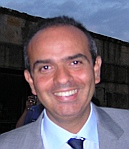 Around 2000 Fabio Roli raised the question “what is the core business of pattern recognition?”. Given very related areas like machine learning, statistical decision theory and neural networks it became natural, and even urgent to wonder about the identity of the field of pattern recognition. These fields are all dealing with learning from examples, with finding classifiers and with estimating and minimizing the recognition error. Where do they differ? In particular for the groups and organizations with pattern recognition in their name: what is specific for them? What is their core research issue? Here is the answer we believe in.
Around 2000 Fabio Roli raised the question “what is the core business of pattern recognition?”. Given very related areas like machine learning, statistical decision theory and neural networks it became natural, and even urgent to wonder about the identity of the field of pattern recognition. These fields are all dealing with learning from examples, with finding classifiers and with estimating and minimizing the recognition error. Where do they differ? In particular for the groups and organizations with pattern recognition in their name: what is specific for them? What is their core research issue? Here is the answer we believe in.
Representation
In 2002 we published a joint paper [1] in which the above question was discussed for the domain of statistical pattern recognition. The answer that gradually popped up was “representation”. It will be argued below that this answer holds for the entire field of pattern recognition. In statistical pattern recognition we deal with representation in a particular way.
If we want to recognize the patterns in the plethora of objects in our world or in the chaos of events in our life we should start with comparing them. What are the similar ones? Which one are different? In order to do this properly we should first bring them in the same domain. It is not possible to compare pictures if one is given by a set of pixels, another one is described in words and a third one is characterized by a graph. No, all objects of interest should first be represented in the same way. After that we can start to compare them and study measures how they differ.
Generalization
Representation is the first step in pattern recognition, see also [2] and [3]. Machine learning, neural networks and statistics are not yet needed. They study and offer good tools once the representation has been defined. Therefor, the core research topic of pattern recognition, the topic that makes it different from the related domains, is to study object representations in which the relevant pattern classes naturally emerge. The development and evaluation of tools to find these classes in an automatic and objective way constitute the next steps: generalization and evaluation. They are significant in judging the usefulness of a particular representation and are thereby also very relevant for the researcher in pattern recognition.
[1]. R.P.W. Duin, F. Roli, and D. de Ridder, A note on core research issues for statistical pattern recognition, Pattern Recognition Letters, vol. 23, no. 4, 2002, 493-499.
[2] S. Edelman, Representation and Recognition in Vision, MIT Press, Cambridge, 1999.
[3]. E. Pekalska and R.P.W. Duin, The Dissimilarity Representation for Pattern Recognition, Foundations and Applications, World Scientific, Singapore, 2005, 1-607.
Filed under: Foundation • Representation
